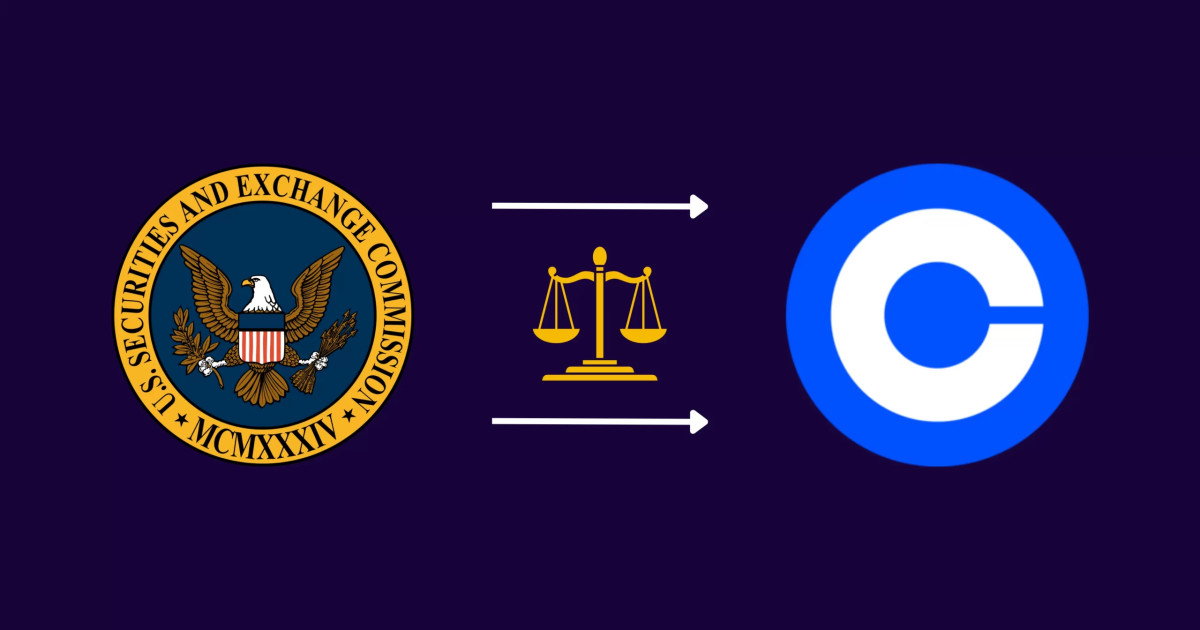Month: June 2024
EUR/USD may face parity risk amid bumpy political backdrop ahead
Post Content
Bitcoin Season Two Proposals Facing Early Headwinds
If you haven’t been around too long, it’s hard to fully appreciate how quickly narratives can shift in this industry, especially when playing catch-up. Fads grow old, memes become tired. It’s fair to say that this year’s seasonal craze is currently feeling the pressure of Bitcoin’s fading momentum.
While it could be easy to write it off as a temporary setback caused by the usual bull market correction, strong underlying currents are working against popular scaling narratives. As this tide is going out, it’s become a little hard to ignore those out there swimming naked.
Is the airdrop meta over?
If it wasn’t clear already, the recent crop of projects proposing to “build on Bitcoin” has so far been more about opportunism than innovation. Yes, BitVM and ordinals sparked genuine interest and creativity but the follow-through leaves a lot to be desired. This has been caused, in large part, by lazy operators. In lieu of doing actual engineering work, every other third-rate entrepreneur in the industry simply took the Ethereum playbook and ran with it on Bitcoin.
I made a case in my last article for why this modular cottage industry has left Ethereum worse for wear from a scaling standpoint but recent developments have highlighted just how misaligned the economic incentives are.
Of course, the impediment to this infrastructure arms race has been the ability of its promoters to print tokens like it’s going out of style. Unfortunately for them, it does look like the trend is beginning to buckle on those schemes. You might remember how everyone eventually pivoted away from ICOs after Dentacoin raised billions of dollars. Something similar is playing out as we speak.
Just a couple of months ago, I explained how the notion of points had conquered the token airdrop meta. Alternative execution layers were popping out left and right, advertising the opportunity to collect eventual rewards in exchange for liquidity on their networks. The premise was simple enough: users would be incentivized to use applications on a given rollup or contribute assets to its trading pools. Once the chain would launch, tokens would be allocated to a semi-random set of qualified participants. The idea was that this would further align them with the protocol and its future.
It turns out the exact opposite is playing out. Over the last week, a couple of heavily anticipated token airdrops shined light on the absurdity of the method.
How do you verify the identity of a user in a pseudonymous system? You can’t. The inability to do so creates an opportunity for any capable actor to impersonate any number of users. Unsurprisingly, well-capitalized actors quickly caught on to the trick and have been very busy exploiting it to their benefit. Instead of users, airdrops have attracted mercenaries who are pillaging every new layer they can get their wallets on.
You might be wondering why I’m writing about tokens in a Bitcoin article. Consider it only a reminder that any Bitcoin scaling proposal or layer that involves a token should be avoided at all costs. Putting aside the fraudulent nature of the assets, this playbook is a telltale sign of projects that are behind the curve, even by Ethereum standards. I don’t care what technology they claim to work on nor should you care about their execution environment or zero-knowledge proof. The window is closing in on them and we can expect them to shortchange their “users” at every turn to profit from whatever liquidity this racket has left. Stay away.
Ethereum’s identity crisis
The Bitcoinlayers platform reported yesterday that more than half of current scaling proposals for Bitcoin were planning on using Ethereum’s EVM as a technology platform. I do not know what to make of this number. It’s probably generous to associate any of those with Bitcoin but the market is clearly interested in exploring this idea.
This is especially telling considering the volatile state of Ethereum at the moment. Don’t call it a civil war yet but some battle lines are being drawn and the outcome will be telling for its rollup-centric roadmap. I previously laid out the case for Ethereum’s network fragmentation. Suffice it to say that things are escalating quickly and the project is again facing serious debates and self-reflection.
On one hand, a cohort of developers are advocating for the enshrinement of rollup operations into the protocol to consolidate economic activity and improve user experience. Another group is raising questions about the initiative claiming it would further centralize MEV extraction and affect censorship resistance. It’s increasingly looking like Vitalik might need to pull another rabbit out of his hat.
Combined with fatigue over the commoditization of EVM execution environments, the previously celebrated modular thesis is starting to look rather tenuous. At the very least, the original playbook does not seem to hold anymore and the narratives are shifting again.
The timing of this could be better for emerging Bitcoin layers who are starting to look pretty outdated by industry standards — and they haven’t launched yet!
Memetic exhaustion
You would never catch me being bearish on memes but they do move in cycles and the latest iteration has lost some of its luster. While I’m not ready to call the top of this new meme paradigm, it’s another example of new Bitcoin layers being late to the show. In their absence, what market exists for all the infrastructure being built?
The ground is shifting beneath the feet of a new generation of Bitcoin builders. I suspect those who decided to take the longer road of putting in actual work will have a better shot at making it to the other end of this bull market. Doing so will require learning valuable lessons from the experiments playing out on the other sides of the pond. It would appear patience is warranted given the quickly evolving state of affairs.
Exploring Bitcoin L2s: Possibilities Beyond Lightning
Bitcoin’s secondary layers are often overlooked despite their undoubted potential to enhance Bitcoin’s potential for even more advanced functionality. Much of the focus is directed at the Lightning Network and its ability to handle microtransactions at high speeds.
However, the secondary layers (or layer 2) can effectively handle smart contracts, leverage cryptographic techniques for advanced privacy, and establish decentralized identity and access solutions that are connected to the blockchain.
This article will explore these fascinating layers and their potential use cases, considering how they may define the future of Bitcoin beyond currency transactions. Bitcoin’s secondary layers are expected to provide the backbone of a complex ecosystem that accelerates the growth of decentralized applications.
What Are Bitcoin’s Secondary Layers?
The terms primary layer and secondary layer refer to the different networks within a single blockchain, the shared database that powers cryptocurrency and other projects.
The Primary layer (layer 1), sometimes referred to as the parent chain or “mainnet” is the blockchain itself and is fundamental to all operations. Secondary layers (layer 2) on the other hand are secondary networks that are developed on top of the blockchain (layer 1), enabling third-party integrations.
Secondary layers help to lessen the load on the blockchain by utilizing its strengths and working around its limitations. These networks can process transactions externally which are then sent back to the blockchain for processing and confirmation. As a result, the overall capacity of the blockchain can be increased, resulting in additional usability and functionality.
The most well-known secondary layer is the Lightning Network which uses state channels (a solution we will discuss later) to enable microtransactions on top of the blockchain. This involves users sending Bitcoin payments through an encrypted peer-to-peer (P2P) channel that works similarly to smart contracts, creating a simple, efficient, and more cost-effective channel between sender and receiver.
What Are The Key Benefits Of Bitcoin’s Secondary Layers?
There are three key benefits of Bitcoin’s secondary layers, to increase scalability and expand the functionality of the blockchain while making it easier for businesses to adhere to financial regulations.
Increasing Scalability
A single set of transactions may take around ten minutes to process on the Bitcoin network, averaging around seven seconds per transaction. This can result in network congestion at peak times and lead to higher transaction fees, impacting the feasibility of microtransactions and point-of-sale transactions.
The Bitcoin blockchain cannot be scaled as this compromises security and decentralization, the two main pillars of the network. Due to the high volume of transactions across the network, secondary layers are being leveraged more to process transactions ‘off-chain’ to reduce the strain on the primary layer.
In terms of decentralized applications, by distributing data across a network of nodes, secondary layers reduce the risk of centralized points of failure and attacks, enhancing the overall security of app deployment processes, as well as patching, updates, and all other forms of changes.
Improving Functionality and Utility
The Bitcoin network is designed to enable transparent P2P transactions and to provide the resources for the digital currency to continue growing in value. By only focusing on these two main functions, the Bitcoin network remains robust and secure, preventing any chance of it being tampered with.
However, this would limit future innovations if it weren’t for secondary layers. Thanks to layer 2, third-party developers can significantly increase the functionality of Bitcoin, expanding its use cases and taking advantage of new, web3 technologies such as NFTs and, of course, smart contracts.
Compliance
With more secure payment channels, adhering to regulations becomes much easier and inexpensive Compliance is a key consideration for any business that accepts cryptocurrency payments.
Secondary layers and the blockchain, both in its current and future iterations, might be the key to establishing many tracking and security features that site owners and companies need to use for PCI-compliant hosting (if they accept payments) or spend six-figure sums on copious amounts of testing.
How Bitcoin’s Secondary Layers Work
Secondary layers can work in different ways and there are three main layer 2 solutions that you should be aware of to help understand the processes.
State Channels – This solution allows users to avoid high transaction fees, providing end-to-end encrypted payment channels to send and receive Bitcoin. State channels are effectively micro-ledgers and only the opening and closing balance is reported to the blockchain once the payment channel closes, allowing users to make unlimited transactions without incurring transaction fees.
Side Chains – Side chains are an independent blockchain that creates a two-way bridge to the blockchain. This makes it possible to easily and quickly transfer data assets between different transaction chains. As an independent blockchain, side chains can also integrate other secondary layer solutions.
Rollup Chains – Rollup chains also allow users to make a large number of transactions off-chain, merging the individual transactions into a single block of data that is then reported to the blockchain. There are two types of rollup chains, optimistic and ZK. Optimistic rollups automatically validate all of the consolidated transactions, while ZK rollups generate a single cryptographic proof as validation.
The development of more secure and faster systems is essential for both small-scale businesses and at the enterprise level where organizations are built on complex processes like switching ERP software or conducting Workday staff augmentation. As third-party secondary layers become even more advanced, these businesses are likely to rely more and more on the blockchain over cloud solutions, accelerating the growth of the Bitcoin ecosystem further.
What Are Some Of The Most Popular Secondary Layers?
We have already discussed the most popular secondary layer, the Lightning Network, so to provide a more in-depth overview of the capabilities of layer 2 we will focus on some of the other commonly used solutions.
Rootstock (RSK)
As a popular side chain, Rootstock (RSK) is at the forefront of smart contract functionality on the Bitcoin blockchain. Its ‘two-way peg’ system involves a user sending Bitcoin directly to RSK where it is stored and secured in a digital wallet as a Smart Bitcoin (RBTC). Users can withdraw the RBTC from the regular Bitcoin blockchain.
RSK offers significantly faster transaction speeds than the Bitcoin network and is also compatible with Ethereum Virtual Machine (EVM), making it possible to execute smart contracts on the Ethereum style blockchain.
Liquid Network
Liquid Network is a solution that improves transaction speeds but also leverages cryptographic techniques to improve the privacy of Bitcoin payments. It is another side-chain solution and runs alongside the blockchain but uses its own native asset Liquid (L-BTC) instead of standard Bitcoin. Liquid Network also uses a two-way peg like RSK, converting BTC to L-BTC
RGB
RGB is a smart contract protocol and secondary Bitcoin layer that is linked to the Lightning Network. It allows users on a Lightning Network to design contractual agreements with the option of creating an issuing token or not. This system offers great speeds and reduced fees while using the primary blockchain as an ownership control and confidentiality mechanism.
By interacting with the Bitcoin Blockchain and the Lightning Network, RGB makes it possible to develop more third-party solutions to investigate advanced blockchain-level automation and reduce transaction fees further.
Stacks Protocol
This protocol enables self-executing smart contracts without needing to use a hard fork, an adjustment to the Bitcoin blockchain which creates a completely new blockchain. Hard forks can often disrupt communities and cause instability which is why they tend to be avoided.
Instead, Stacks Protocol uses microblocks which provide high speeds and work on a unique Proof-of-Transfer (PoX) mechanism to connect them to the Bitcoin blockchain. This makes it extremely easy to run smart contracts and decentralized applications without leaving the Bitcoin ecosystem.
Conclusion
The Bitcoin Blockchain (its primary layer) has many limitations as it is purely designed to facilitate secure P2P transactions. This is why secondary layers are required that allow third-party integrations to work alongside the blockchain to provide innovations.
These layers can result in lower transaction speeds, faster processing times with minimal network congestion, and integrate advanced cryptographic privacy techniques.
In the future, secondary layers are expected to facilitate even further growth, supporting the Bitcoin ecosystem to integrate a range of advanced, decentralized applications that can revolutionize P2P transactions, point-of-sale payments, and much more.
This is a guest post by Kiara Taylor. Opinions expressed are entirely their own and do not necessarily reflect those of BTC Inc or Bitcoin Magazine.
Tackling Bitcoin MEV Opportunities With Rebar Labs
Rebar Labs, a team of seasoned veterans from the cryptocurrency industry, is bringing their expertise to Bitcoin to tackle the emerging challenges posed by on-chain Maximal Extractable Value (MEV). The company has successfully raised $2.9 million in seed funding, led by 6th Man Ventures, with participation from ParaFi Capital, Arca, Moonrock Capital, and UTXO Management.
Carl Vogel of 6th Man Ventures commented, “As the ecosystem of the world’s largest digital asset grows, Rebar’s products will enable good MEV for fair and efficient markets, creating more value for users and miners and enabling the foundation for a flourishing ecosystem.”
Rebar Labs’ Focus Areas
Rebar Labs has unveiled three key areas of focus in their quest to enhance the Bitcoin ecosystem:
Infrastructure: An alternative to the public mempool via private transactions will allow miners to capture potential MEV revenues and optimize block construction and fees. Other ecosystem participants affected by the issues created by MEV will be able to leverage wallet integrations provided byRebar’s upcoming products Products: To highlight the growing MEV-generating activity on the Bitcoin protocol, the company is expected to build data products and dashboards allowing for easy access to the relevant information. Research: Rebar Labs intends to produce analysis, articles, and reports on new, unexplored activities on Bitcoin, with a focus on MEV.
What is MEV?
Maximal Extractable Value (MEV) involves various techniques used by market actors to capture additional value by exploiting price inefficiencies in blockchain transactions. This concept has become increasingly relevant in Bitcoin with the rise of on-chain activities such as NFTs and token protocols like BRC-20s and Runes.
We cover the idea in more detail here.
The announcement comes at a curious time as Bitcoin on-chain activity has significantly subsided following a significant ramp-up earlier this year. Runes, a new token proposal launched during the halving last April has faced significant headwinds since its release. Concern over MEV has also led to significant research efforts looking to move most of this activity to secondary layers to improve user experience and avoid miner incentives issues.
In a conversation with Bitcoin Magazine, the team expressed confidence in the idea that activity involving MEV would continue to grow moving forward.
Earlier this year, US-based Marathon Digital Holdings announced their own proprietary service for users to submit transactions to their MARA pool.
Rebar Labs hopes that harnessing MEV can help mitigate the impact of diminishing block rewards by offering opportunities to subsidize mining revenue through MEV activity. Users could also benefit from Rebar’s infrastructure to defend themselves against frontrunning, sandwich attacks, and other strategies that could impact market fairness.
The company plans to launch its first products this summer.
“Bitcoin is entering a new era of programmability and increased trading activity,” said Alex Luce, CEO of Rebar Labs. “Our mission is to develop infrastructure and products that help the Bitcoin community — its users, miners, and developers — navigate the emerging MEV landscape on Bitcoin, ensuring a more equitable and transparent ecosystem.”
Rebar Labs is a portfolio company of UTXO Management, a regulated capital allocator focused on the digital assets industry. Bitcoin Magazine is owned by BTC Inc., which operates UTXO Management. UTXO invests in a variety of Bitcoin businesses, and maintains significant holdings in digital assets.
Crypto Exchange Coinbase Sues SEC, FDIC, Alleging Regulatory Overreach
Coinbase has filed lawsuits against the Securities and Exchange Commission (SEC) and the Federal Deposit Insurance Corporation (FDIC), accusing the agencies of trying to cripple the crypto industry.
BREAKING: 🇺🇸 COINBASE IS SUING THE SEC, ALLEGING REGULATORS ARE TRYING TO CRIPPLE THE CRYPTO INDUSTRY. pic.twitter.com/bD1B1Vny1r
— Bitcoin Magazine (@BitcoinMagazine) June 27, 2024
The lawsuits, filed on June 27th in Washington D.C. district court, allege the SEC and FDIC failed to comply with Coinbase’s Freedom of Information Act (FOIA) requests. Coinbase says this information could shed light on coordinated efforts by regulators to restrict crypto’s access to banking services.
In its complaints, Coinbase asserts that federal regulators are deliberately campaigning to cut Bitcoin and crypto companies off from the banking system. This represents an existential threat to the industry by choking off vital financial lifelines.
Coinbase points to regulators pressuring banks to deny accounts and services to Bitcoin and crypto firms. It likens this to “Operation Choke Point,” an Obama-era initiative discouraging banks from working with certain “high-risk” sectors.
The exchange argues regulators are violating transparency laws to hide the full scope of their crypto crackdown. Coinbase aims to expose regulatory overreach it says far exceeds agencies’ mandates.
However, legal experts caution that FOIA lawsuits face an uphill battle given agencies’ broad discretion over disclosure exemptions. Proving malicious intent by regulators could also prove difficult.
Nonetheless, the cases represent Coinbase’s latest pushback against regulators like the SEC, with whom it is already locked in multiple legal battles. The exchange is defending the Bitcoin and crypto industry against regulatory hostility threatening its viability.
Coinbase’s accusations resonate with Bitcoin and crypto proponents who believe regulators are abusing their powers to deliberately slow technological advancements.
India’s INR Under RBI’s Watchful Eye: A Balancing Act
Post Content
South African rand drops on reported discord over cabinet posts
Post Content
US dollar rally unlikely to be sustained going forward – UBS
Post Content
US Government Moves Millions in Bitcoin to Coinbase
On June 26th, the US government sent 3,940 Bitcoin to Coinbase Prime, Coinbase’s institutional trading platform. Blockchain analytics firm Arkham Intelligence flagged the transaction.
JUST IN: 🇺🇸 US Government sends 3,940 #Bitcoin worth $241 million to Coinbase 👀 pic.twitter.com/m14HpdeJ0s
— Bitcoin Magazine (@BitcoinMagazine) June 26, 2024
The transferred Bitcoin was originally confiscated from convicted drug trafficker Banmeet Singh earlier in 2024. Singh was arrested in London in 2019 on distribution charges and extradited to the US in 2023.
As part of his conviction, Singh forfeited over 8,100 Bitcoin, worth around $150 million at the time, to US authorities.
While the recent transfer of nearly 4,000 Bitcoin is substantial, it represents just a fraction of the government’s total Bitcoin holdings. Data shows the US government currently possesses around 214,000 Bitcoin worth over $13 billion – making it the largest national holder of Bitcoin globally.
Much of the government’s Bitcoin comes from seizures related to the shuttered dark web marketplace Silk Road. The infamous Bitfinex hack of 2016 also contributed to the stash.
The transfer to Coinbase signals the government may be looking to sell some of its long-dormant Bitcoin reserves. This adds to fears of price impacts similar to the recent German government sell-off.
However, the amount moved so far is relatively minor compared to daily Bitcoin trading volumes. The US government still holds the vast majority of its seized Bitcoin, now worth billions more due to Bitcoin’s meteoric price rise.
Dollar consolidates ahead of key inflation release; yen nears intervention
Post Content









